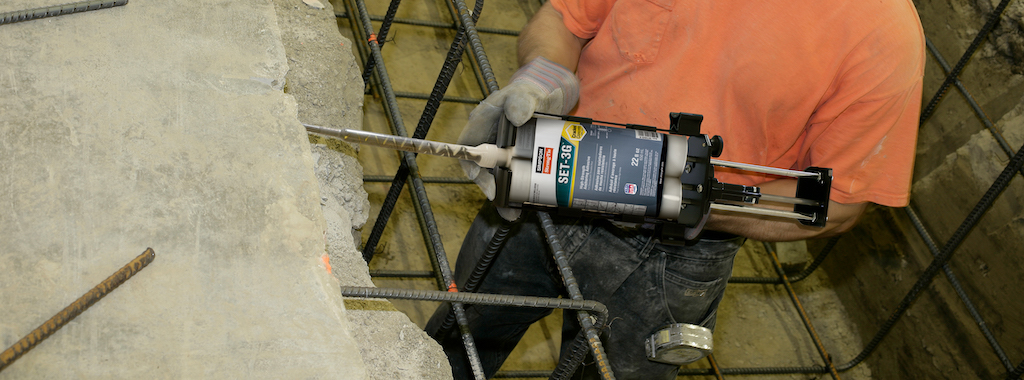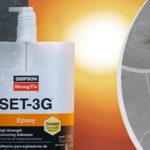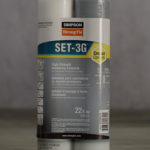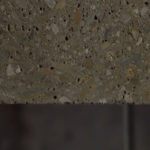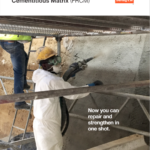We’ve been receiving a lot of requests lately from engineers wanting to know exactly what the difference is between Simpson Strong-Tie’s relatively new adhesive, SET-3G™, and its predecessor, SET-XP®. Both are epoxy-based adhesives used to anchor threaded rods and reinforcing bars in concrete base material for structural applications. If you perform a live pull test on a ½“-diameter mild steel rod embedded 4“ deep in 3,000 psi uncracked normal-weight concrete, the result will likely be the same; in both cases, the steel rod will break in a ductile manner at around 11 kips. You can see this hourglass-shaped steel failure mode happening in Figure 1. (To learn more about anchorage failure modes and ductility, check out this blog). Yet, the SET-3G design values shown in ESR-4057 come out ahead. But why?
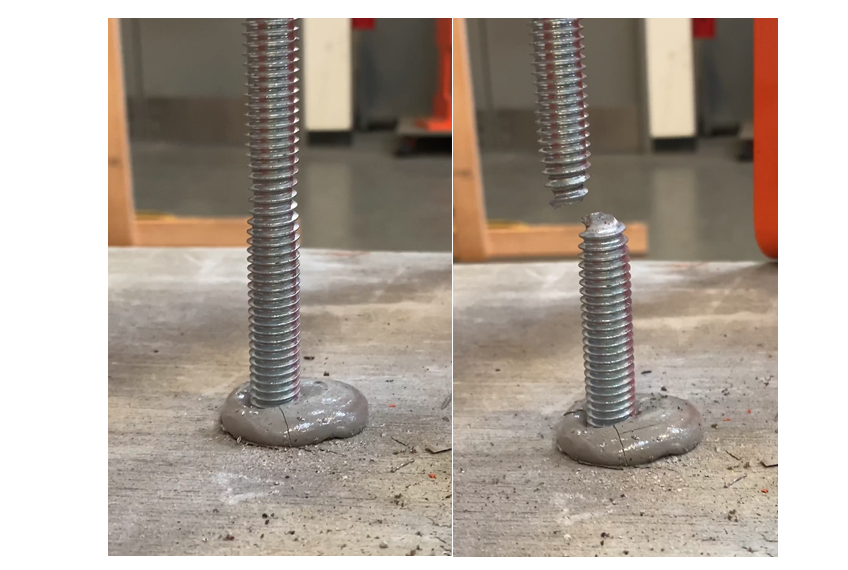
The average bond strength used to determine the adhesive (pullout) design strength of SET-3G for gravity load resistance in cracked concrete is roughly 200% greater than that of SET-XP. The primary reason for this impressive difference is not obvious and requires that we look at the history of Simpson adhesive anchor development. If we go back nine years, we’ll find that the concrete anchorage qualification standard, AC308, was revised to require that the long-term creep behavior of an adhesive anchor be measured at a temperature of 110°F instead of the previously required temperature of 75°F. (AC308 adopted this change from ACI 355.4 – 11, a new qualification standard for adhesive anchors introduced in 2011.) This change happened after SET-XP made its debut in 2007 and was based on the expected temperature rise of concrete exposed to sunlight. Some notable factors that influence adhesive creep are load magnitude, load duration, and temperature. Long-term creep requires that test data be collected for a minimum period of time and extrapolated to 10 years to verify that the anchor displacement is acceptable. The new 110°F temperature requirement made it difficult to design an adhesive with both high bond strength and acceptable long-term creep behavior, the latter being especially important for anchorage used to support gravity loads. The Simpson chemists met this challenge and developed the new adhesive formulation called SET-3G.
The second reason for higher performance is that a wire brush is required to clean the hole for SET-3G adhesive (anchor manufacturers are increasingly turning to this cleaning method). A nylon brush is required for SET-XP. The wire brush scours the surface of the hole more aggressively, allowing for better performance in both water-saturated and water-filled hole conditions. This feature comes in handy for those rainy days! However, keep in mind that a dry (and of course clean) hole is necessary for optimal performance.
SET-3G can also be installed in concrete having a temperature as low as 40°F whereas SET-XP requires a minimum installation temperature of 50°F.
A further performance enhancement for SET-3G is that, unlike SET-XP, f‘c is not limited to 2,500 psi in design calculations for cracked concrete applications. Doubling f’c, for example, results in a roughly 40% increase in the anchor breakout strength. Similarly, an almost 20% and 30% increase in the adhesive (pullout) strength can be expected for cracked and uncracked concrete, respectively.
Noteworthy is that the design bond strength of SET-XP increases by more than 70% for short-term loading applications, like seismic or wind, because long-term creep is no longer an issue. This is the reason why the steel rod mentioned above breaks using either adhesive when doing the 1-minute-long tension test. Experimentally, SET-XP starts out with decent bond strengths in uncracked concrete. However, the adverse test conditions noted above, namely resistance to long-term creep and hole moisture, affected SET-XP performance more severely than SET-3G. Furthermore, when the cracked concrete adhesive anchor criteria, AC308, became effective almost 15 years ago, third-party laboratories responsible for anchor qualification faced very complex test setups for the first time. As we learned more, the anchor industry has applied best practices in an effort to produce results that in the past were probably too conservative. In the end, SET-3G bond strengths come out ahead for both uncracked and cracked concrete conditions. As this blog post explains in detail, a higher bond strength makes it possible to achieve a ductile failure mode for an anchor near an edge in cracked concrete.
The next improvement is that SET-3G™ requires a minimum concrete thickness of hef + 2d (hef = anchor embedment, d = hole diameter) making it easier to embed anchors deeper in thinner base materials for the purpose of increasing the anchor design strength. SET-XP is limited to hef + 5d. While hef + 2d can be seen as a benefit for applications such as out-of-plane anchorage in a tilt-up wall, this constraint does not address the possibility for concrete to spall as the roto-hammer bit nears the back surface of the wall as shown in Figure 2. Switching the roto-hammer to rotation-mode only toward the end of the drilling depth will prevent spalling but will increase drilling time slightly.
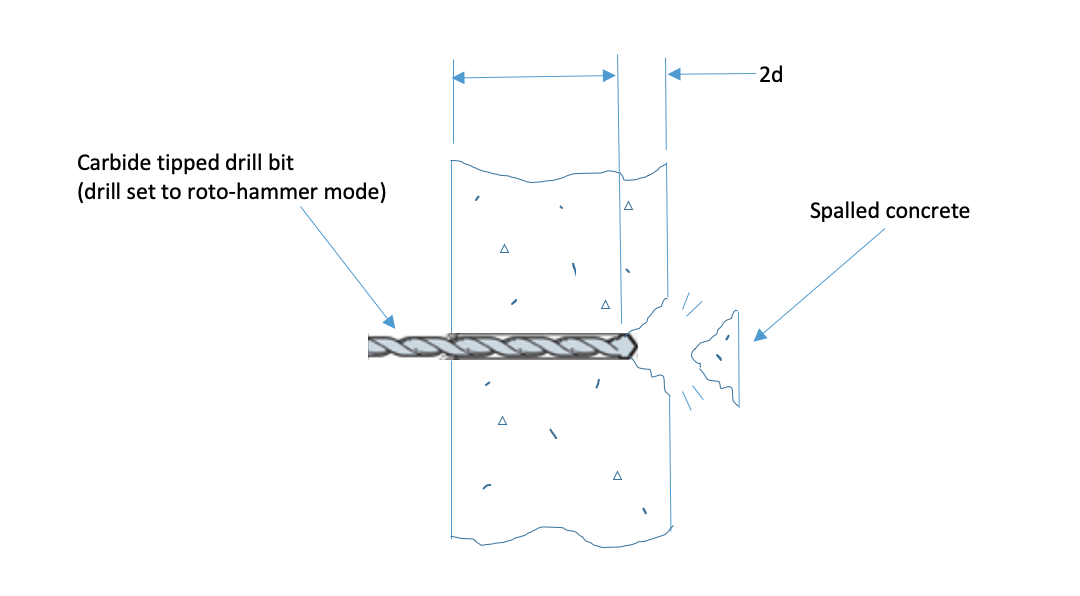
Up to this point, we have addressed adhesive anchors designed in accordance to the ACI 318 – 14, Ch. 17 anchor provision. SET-3G also demonstrates an advantage over SET-XP when it is used to secure a post-installed reinforcing bar designed in accordance with the ACI 318 – 14 rebar development length (RDL) provision. The SET-XP RDL calculation limits f‘c to 2,500 psi for applications subject to earthquake loading in SDC C – F. This restriction does not apply to SET-3G. If, for example, f‘c equals 5,000 psi, then the development length for a reinforcing bar secured to concrete with SET-3G is about 30% less than it is for SET-XP. This blog post covers in greater detail the rebar development length provision and its application to post-installed reinforcing bars, using SET-3G and SET-XP in several design examples. A web-based calculator makes it easy to determine the rebar development or lap splice length for either adhesive product.
One benefit of SET-XP is that it has values published for anchors in grout-filled CMU whereas SET-3G does not. This will change, eventually, as Simpson has begun testing SET-3G in accordance with the new ICC-ES AC58 cracked masonry criteria. For now, many distributors find it convenient to stock a product like SET-XP because contractors find value purchasing a single product that can be used in both concrete and CMU base materials, unlike SET-3G. However, where performance and flexibility are needed in concrete, SET-3G is the clear choice for achieving higher design strengths!

